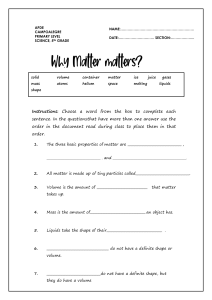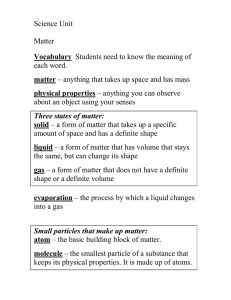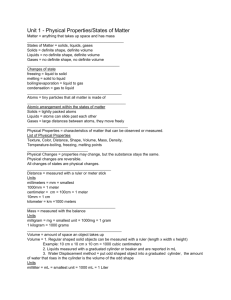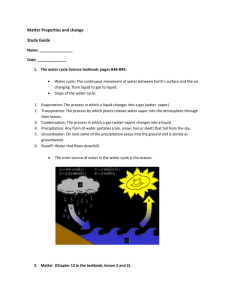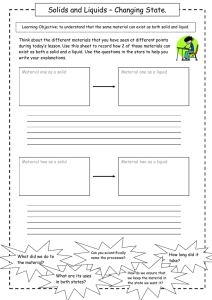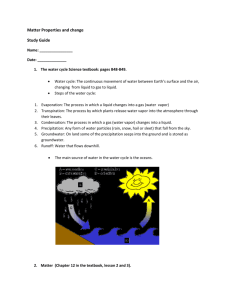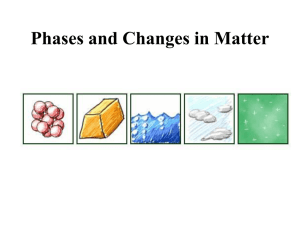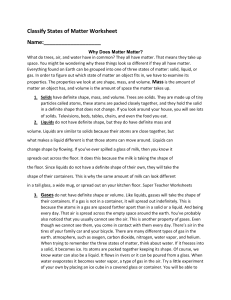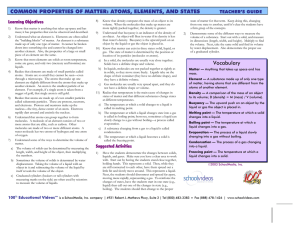Matter: Chemical and Physical Properties
advertisement
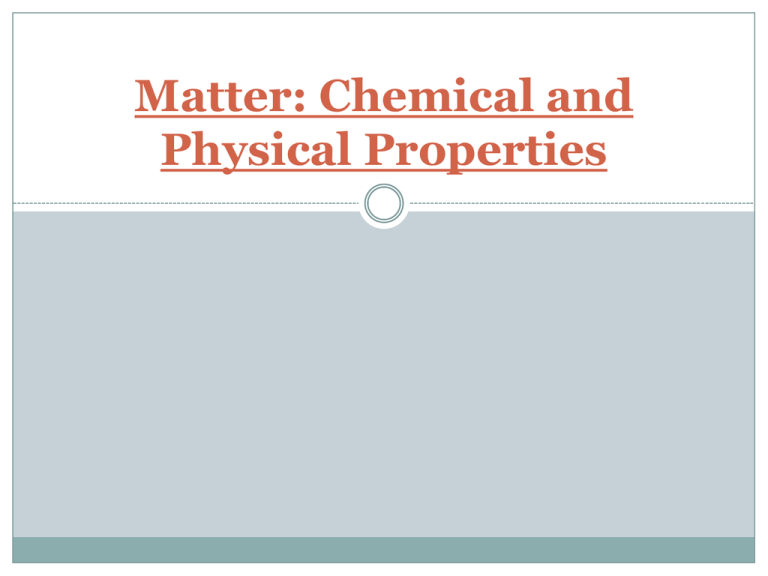
Matter: Chemical and Physical Properties Review… Matter is… It commonly comes in four forms: Anything that has mass and takes up space Solid Liquid Gas Plasma Solids Matter that has a definite shape and definite volume. Solids will not take the shape of a container. They are made up of tightly packed atoms that have restricted motion. Liquids Liquids have a definite volume however they will take the shape of the container in which they are placed. Atoms are arranged loosely and move about freely. Because liquids flow they are consider fluids. Gases Gases take the shape of whatever contains them. They have no definite volume as they readily expand to fill a room and can be compressed tightly to occupy small spaces. Atoms moves about wildly but will flow and are fluids. Plasma Believe it or not the most common phase of matter in the universe! Similar to gas but even more “excited” atoms-a certain number of the atoms become ionized. All of the stars are made of plasmas. Phase Transitions: Matter can change from phase to phase with the addition or removal of energy. Properties Physical Chemical Defining Physical & Chemical Properties Physical Pr0perties Chemical Properties A physical property is A property of matter any property that can be observed or measured without changing the composition of matter. Properties that won’t change the chemical nature of the matter that describes its “potential” to undergo some chemical change by virtue of its composition. Properties that will change the chemical nature of thematter Physical Properties Boiling Point Melting/freezing Point Color Smell Viscosity Opacity Are there others? Chemical Properties Flammability (and volatility) Reactivity to acid Reactivity to water And more… What about these properties? Magnetism? Solubility (The ability to dissolve)? Evidence of a Physical Change Change of state (phase) Melting/freezing/boiling Can be changed back to /condensing Cutting of the material Others? original item easily No loss of chemical properties as a result of the change Evidence of Chemical Change Temperature change Flame/smoke is Energy absorbed or given generated Odors not previously associated with the substance are present Change of mass may result off Gas bubbles form Color change of the substance Substance cannot be returned to original form without an additional chemical reaction
